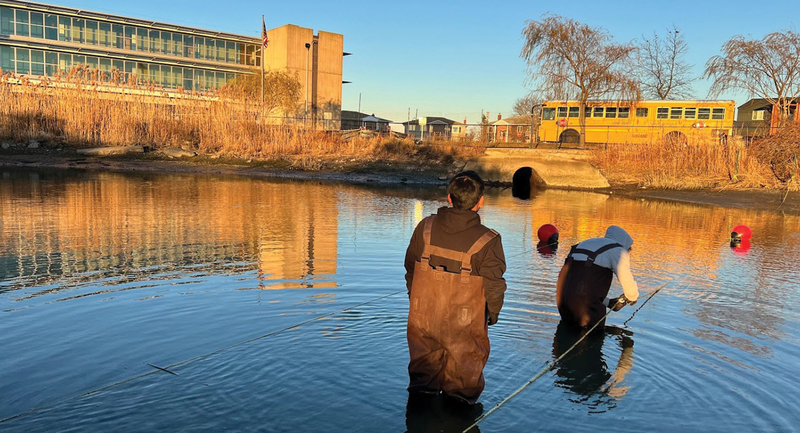In the run-up to the 2016 presidential election, Facebook and other social media sites were abuzz with stories about Pope Francis endorsing Donald Trump, ISIS leaders calling for American Muslims to vote for Hillary Clinton, and Mike Pence labelling Michelle Obama vulgar. There was just one problem: The stories were all untrue.
Yet according to an analysis by BuzzFeed (Silverman, 2016), these and other "fake news" stories received hundreds of thousands of engagements and reposts on Facebook—outstripping news from traditional media outlets like CNN and touching off a firestorm of criticism of Facebook.
Amid our furor over fake news sites, we might ask a larger question: How could people be so easily duped? After all, many fake news stories are patently absurd or easily fact checked. That question might lead to another: How can we help our students, who are increasingly bombarded with information of varying reliability, read not just with comprehension, but also with discernment—in short, by applying critical thinking?
Let's start by acknowledging that critical thinking—or the lack of it—isn't a new concern. More than 70 years ago, Edward Glaser, an early leader in critical-thinking research, lamented that although public education in the United States had created a "literate electorate," "a sufficient proportion of citizens" still couldn't "evaluate critically what they read" (Glaser, 1941, p. 4–5).
What might be different today is that critical thinking seems to be the sina qua non of the information age. The number of job postings referencing "critical thinking" doubled between 2009 and 2014 (Korn, 2014). A recent analysis of postgraduation outcomes for nearly 1,000 college graduates found that those with better critical thinking abilities landed better jobs (Zahner & James, 2015). In a recent survey, 80 percent of Americans put critical thinking skills at the top of the list of what schools should teach (Lopez & Calderon, 2013).
It's Complicated …
But what exactly is critical thinking? Researchers see it as a complex mix of dispositions and skills, including valuing inquisitiveness and alternative points of view, using logical reasoning to create and support arguments, and examining our own beliefs and being able to change them in light of new, compelling data (Abrami, et al., 2015). Critical thinking is often closely interwoven with domain-specific knowledge. As a result, it isn't a skill in the usual sense of the word—something learned and easily transferred to new contexts. Rather, critical thinkers employ the principles of scientific thinking with science knowledge, textual analysis with literature, quantitative reasoning with mathematics, and so on.
This complexity may explain why even colleges—where we'd expect students to sharpen their thinking abilities—often do little to develop critical thinking. A recent analysis of 2,300 undergraduates at 24 institutions found that 45 percent of these students demonstrated no significant gains in critical thinking, complex reasoning, and writing during their first two years of college (Arum & Roksa, 2011). A study of 32,000 college students arrived at a similar finding: Fully 40 percent of students demonstrated only basic or below-basic levels of critical thinking (Belkin, 2015).
… But Can Be Learned
Nonetheless, research has shown that it's possible to help students develop critical thinking. Two big ideas emerge from these studies:
Teach it directly. One seminal meta-analysis of critical thinking approaches (Bangert-Drowns & Bankert, 1990) concluded that critical thinking doesn't develop through osmosis; merely exposing students to literature, history, or logical proofs does little to develop it. We must actually teach such thinking and give students opportunities to practice it. Marin and Halpern's study of students in low-performing high schools (2011) offers a case in point. Students were placed in three groups. One group received explicit instruction in critical thinking (how to develop arguments, parse correlation from causation, identify stereotypes and mental models, and predict long-term consequences of decisions); a second took an introduction to psychology workshop that had critical thinking "embedded" into lessons (students were asked to analyze data for validity, interpret graphs, observe correlations, and identify cause and effect, but weren't taught these skills directly); and a control group proceeded with regular coursework. When all three groups were retested on their critical thinking abilities three weeks later, the explicit-instruction group demonstrated significant gains in critical thinking. The embedded instruction and control groups showed no gains.
Don't teach it in a vacuum. A more recent meta-analysis (Abrami et al., 2015) highlighted three essential elements for developing students' critical thinking: (1) classroom dialogue and discussion, (2) complex problem solving, and (3) mentoring. One study (Pellegrino, 2007) that examined a "historical thinking" pedagogy in a high school American history course illustrates the point: With mentoring from teachers, students conducted independent inquiry, drawing on multiple sources to develop and present their own views on a historical period and the events shaping it. Simultaneously, classroom discussions encouraged them to understand differing views of history. With all three elements in place—mentorship, inquiry into complex problems, and dialogue—students demonstrated significant gains in critical thinking. Perhaps the most important takeaway was that critical thinking was both taught directly and interwoven into course content.
The Power of Because
These two ideas suggest that the best approach to helping students develop critical thinking is through explicit instruction—not as a standalone endeavor, but within respective fields of knowledge. Silver, Perini, and Boutz (2016) suggest one starting point for building critical thinking: Ask students to support every answer they give with the word because ("I know this is the best interpretation/most plausible explanation/strongest argument because …"). It's a simple, powerful word—a concentrated drop of critical thinking. Asking students to pause and ponder before they accept (and share) information may be the best deterrent to "fake news" we can offer.








